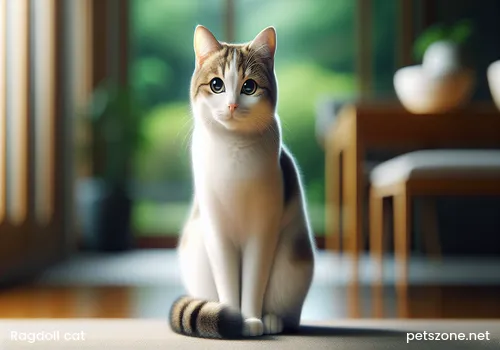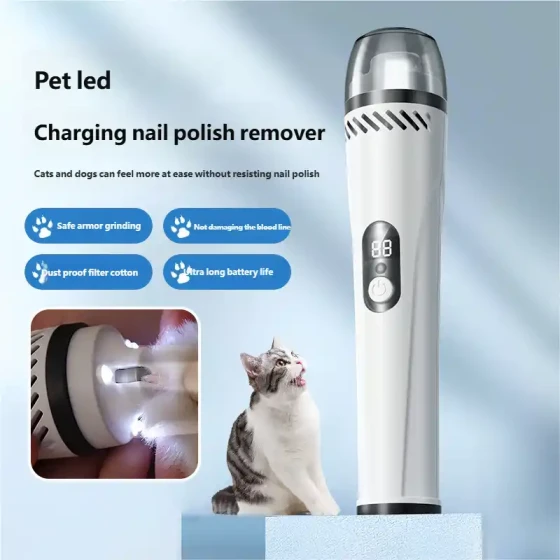Ragdoll Cat Habits_Revealing the Gentle and Clingy Personality Traits of Ragdoll Cats
Ragdoll cats, the name itself sounds like cute dolls, and their personality truly matches that! They are known for being gentle, clingy, and friendly to people, often called "dog cats" or "dog-like cats," making them popular family pets. Ragdolls love to be with people and happily participate in daily family activities, like a constant little shadow.
About Ragdoll Cats: Behind Their Gentle and Clingy Nature

The name Ragdoll itself carries a story, originating from their unique habit: when picked up, they fully relax, becoming soft and floppy like a child's rag doll. This gentle trait makes them stand out in the feline world. Ragdoll cats originated in California in the 1960s, bred by a breeder named Ann Baker.
Why Are Ragdolls So Clingy?
One of the most attractive qualities of Ragdoll cats is their clinginess. They are highly dependent on their owners, enjoy staying close, and crave petting and attention. This behavior resembles dogs, which is one reason they are called "dog cats."
The clingy behavior of Ragdolls includes various forms such as:
- Your shadow-like companion: Wherever you go, they might follow you closely, just like your little tail.
- Actively seeking petting: They will nuzzle you and even gently bump you with their head to express their desire for attention.
- Purring beside you: If a Ragdoll purrs while next to you, it usually indicates they feel very relaxed and secure, showing their affection.
- Enjoy sleeping with you: Many Ragdolls like to climb onto their owner's bed and sleep together, enjoying intimate moments.
- Greeting you at the door: Some Ragdolls wait at the door to welcome their owner home, just like a dog.
This clinginess means Ragdolls require plenty of companionship. If you are busy and away from home often, you should carefully consider whether a Ragdoll is suitable because long-term lack of company may negatively affect their mental health.
A Gentle and Friendly Companion
Besides clinginess, Ragdolls generally have very gentle, friendly, and patient temperaments. This makes them ideal family pets, especially suitable for households with children or elderly members. They typically get along well with other pets, including dogs.
Ragdolls are not troublemakers; they have soft voices and are relatively quiet. They enjoy playing with toys and participating in family activities. Although gentle, this doesn’t mean they are inactive: moderate play is important for their health.
High-Value Appearance
Beyond their charming personalities, Ragdolls also have stunning appearances. They are usually large, muscular, with thick, silky fur and captivating blue eyes. Ragdolls come in various color patterns, commonly including colorpoint, mitted, bicolor, and van. Their coat color stabilizes around age two, while their physique and weight mature fully by three to four years old.
Ragdoll Cat Care Tips
Although Ragdolls have a gentle and easy-going temperament, responsible "pet parents" should understand their care needs and potential health issues.
Grooming Is a Must
Ragdolls have beautiful long fur that requires owners to invest time and effort in grooming. To prevent matting and reduce shedding, daily brushing is recommended. Regular grooming keeps them beautiful and reduces hairballs. Some Ragdolls may need occasional baths, but not too frequently.
Potential Health Problems
While Ragdolls appear robust, like other breeds, they are prone to some hereditary diseases. Awareness of these risks helps with early prevention and treatment.
Common health issues in Ragdolls include:
- Hypertrophic Cardiomyopathy (HCM): The most common inherited heart disease in Ragdolls, leading to thickened heart muscles and impaired heart function. Responsible breeders perform genetic tests to reduce this risk.
- Polycystic Kidney Disease (PKD): Another possible hereditary disease causing cyst formation in the kidneys, affecting kidney function. Genetic testing aids screening.
- Urinary System Diseases: Ragdolls are prone to cystitis and urinary stones. Adequate water intake and appropriate cat food choices help prevent these.
- Gastrointestinal and Hairball Issues: Their long fur is prone to ingestion, causing hairball buildup and digestive problems. Regular brushing and use of hairball remedies are important.
- Dental Problems: They can also develop gingivitis or periodontal disease. Regular oral care and checkups are necessary.
To ensure their health, regular veterinary checkups, vaccinations, and deworming are essential. Providing balanced nutrition and proper exercise also contributes to their wellbeing.
Environment and Companionship
Ragdolls are best kept indoors as they trust humans deeply and lack strong self-protection instincts; going outside may expose them to dangers. Providing a safe, comfortable living space with scratching posts (to satisfy scratching instincts), cozy beds, and toys is vital for their happiness and health.
Since Ragdolls require much companionship, owners need enough time to interact and play with them. If you frequently travel or are away for long periods, consider getting a companion for your cat or arrange daytime care solutions.
Financial Investment
Keeping a Ragdoll cat requires a financial commitment. Apart from the initial purchase price (which varies greatly depending on pedigree and coloration, ranging from several thousand to over ten thousand RMB), ongoing costs include cat food, litter, toys, medical care (vaccinations, deworming, checkups, and possible treatments), all of which are continuous expenses.
Frequently Asked Questions
- Why is the Ragdoll called a "dog cat"? Because Ragdolls are clingy like dogs, follow their owners closely, and crave companionship and interaction, earning them the nickname "dog cats" or "dog-like cats."
- Do Ragdolls shed a lot? Ragdolls do shed, but compared to other long-haired cats, their shedding is generally not very severe. Regular grooming effectively controls shedding.
- Are Ragdolls suitable for beginners? Their gentle and friendly nature makes Ragdolls relatively suitable for beginners, provided the owner is willing to invest time and effort in companionship and care.
- How long do Ragdolls usually live? Healthy Ragdolls typically live around 10-15 years or even longer. Scientific feeding and regular health checks help extend their lifespan.
In conclusion, Ragdolls have won the hearts of many "cat slaves" with their gentle, clingy personalities and stunning looks. They are ideal family companions that bring endless joy and warmth to life. However, before deciding to keep a Ragdoll, make sure to fully understand their habits, needs, and potential health issues to ensure you have enough time, energy, and financial capability to care for them, allowing this "charming little imp" to grow up healthy and happy under your care.
-560x560.webp)


